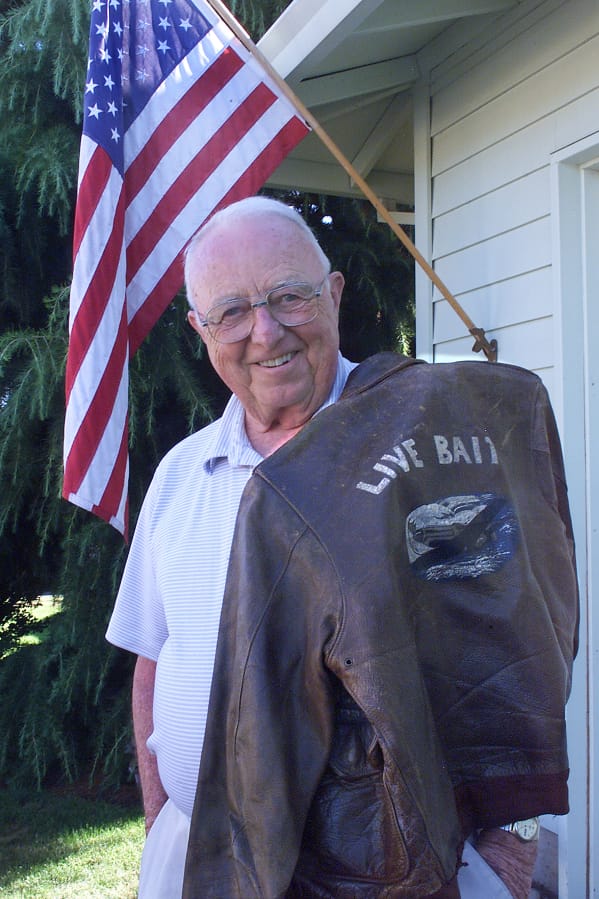Clayton Kelly Gross’s jacket seemed to have a swagger of its own, even when he wasn’t wearing it.
It wasn’t just the rich brown leather. There was also the faded white block lettering across the back reading “Live Bait,” recalling when he was ordered to fly low and maybe attract German fighters.
In the center was the painted image of a P-51 Mustang. That was one of the aircraft Gross flew as a member of the 354th Fighter Group when he became a World War II fighter ace, with 6 1/2 kills in the skies over Europe. (It took five to become an ace.)
Now the jacket is an artifact in one of America’s most popular historical showcases. Before his death in 2016, the former Vancouver resident donated it to the National WWII Museum in New Orleans.
That jacket showed up a few times in the pages of The Columbian after reporters and photographers visited Gross, former president of the American Fighter Aces Association, over the years.
Another keepsake was a reminder of the only time he was shot down. It was the rip-cord handle from his parachute. Gross literally couldn’t let go. After he was picked up by a couple of G.I.’s, one of them offered the pilot a cigarette.
“I reached for it, and realized I still had my parachute rip-cord handle clutched in my hand. I’d been dragging the cable around for a good half-hour,” he said in an interview.
The National WWII Museum recently produced an online video about those leather jackets. Curator Larry Decuers explained what makes them such a prized artifact.
“The flight jackets represent the largest portion of our combat-worn uniform collection,” he said. “If you were a ground-pounder, you had to live in the mud, the uniform was filthy and it was usually tossed.”
Status symbols
Pilots and other military aviators “were able to hang onto their stuff a little easier,” he said.
The A-2 flight jacket was developed in the early 1930s.
Airplanes in that era were not pressurized, and “leather was one of the few wind- and water-resistant materials that was available,” Decuers said.
That style of flying jacket was one of the first garments made with a zipper. The Army jacket was made from horsehide; the Navy version was made from goat leather, he said. In 1943, the military transitioned to synthetic fabric flying jackets as standard issue.
“But to airmen, the A-2 leather jacket became a status symbol,” he said.
Near the end of the video, an interviewer asked whether Decuers had ever found anything interesting in a jacket pocket.
“I have found a spare patch in a pocket from time to time,” the curator recalled.
“And we do have a jacket from a Mustang ace from the 354th Fighter Group who kept his lucky ring from his chute that he bailed out of his plane with. That was in one of the pockets.”
Off Beat lets members of The Columbian news team step back from our newspaper beats to write the story behind the story, fill in the story or just tell a story.




